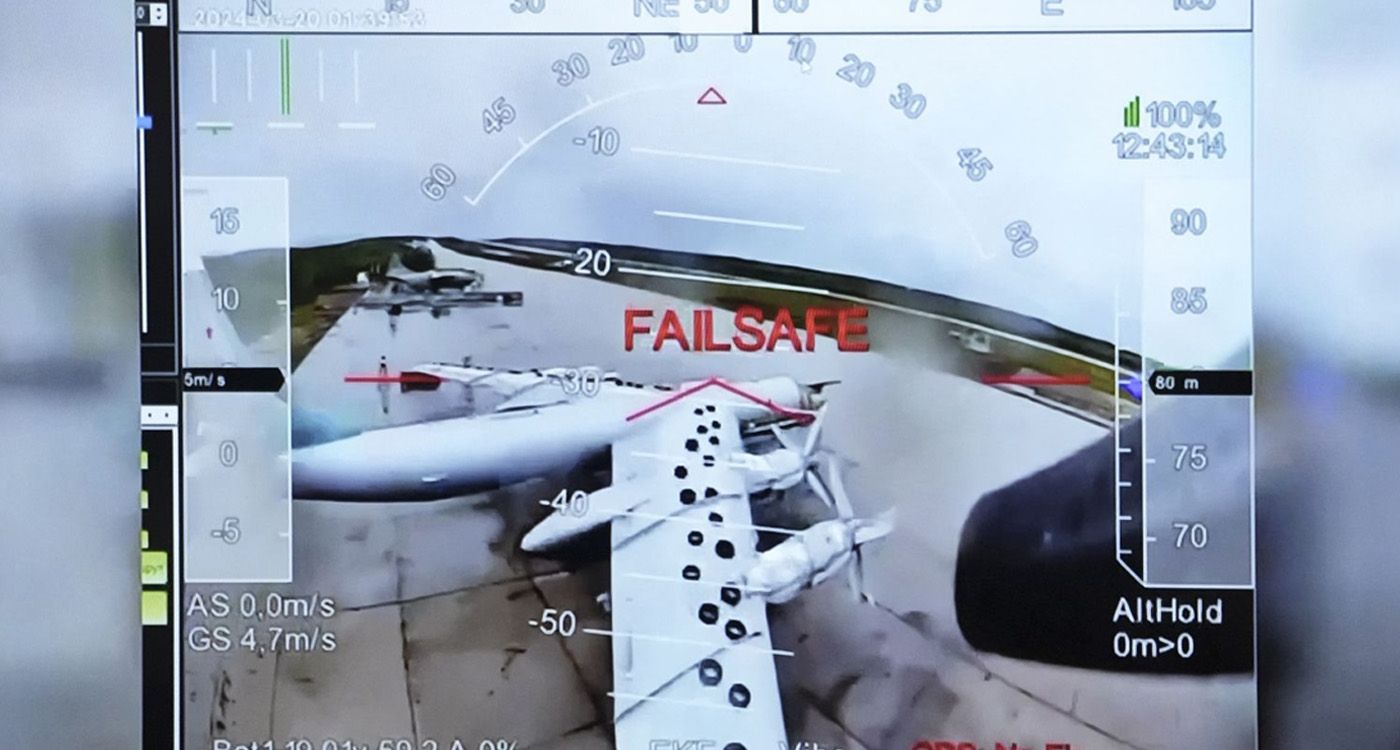- Home
- Arab World
- Spider’s Web: Drones and AI Transforming the Ukrainian Conflict

©Oliver Contreras / AFP
Ukraine’s covert “Spider’s Web” operation, launched last Sunday, marks a significant shift in the Russo-Ukrainian war. Using advanced kamikaze drones, Kyiv struck four Russian air bases located thousands of kilometers behind enemy lines, reportedly destroying over 40 military aircraft and causing an estimated $7 billion in damage.
In an unprecedented development, some of the targeted bases were in Eastern Siberia, more than 4,000 kilometers from Ukrainian positions – well beyond the range of any conventional weapons previously used by Kyiv.
Homemade Drones, Mass-Produced
The drones used in the operation were small FPV (First Person View) models, remotely piloted via onboard cameras.
Assembled locally in Ukraine from low-cost electronic components – including game controllers, action cameras and standard batteries – these drones are part of a large-scale wartime manufacturing initiative.
According to Oleksandr Kamyshin, the former Minister of Strategic Industries, cited by the Kyiv Independent, Ukraine can now produce up to five million FPV drones annually.
Each drone costs between $600 and $1,000, according to the Center for Strategic and International Studies (CSIS). This is a minuscule fraction of the value of their targets: Tu-160 “Blackjack” and Tu-95MS “Bear” bombers are each worth several hundred million euros, while an A-50 “Mainstay” radar aircraft is valued at approximately $340 million.
An Operation Conceived in Secrecy
The raid was the result of meticulous planning. For over 18 months, Ukrainian intelligence reportedly infiltrated around 150 drones deep into Russian territory, according to President Volodymyr Zelensky.
The drones were concealed inside wooden cabins mounted on ordinary freight trucks. Unwitting Russian drivers transported these vehicles to pre-designated launch sites just kilometers from the targeted air bases.
Once in position, a remote mechanism opened the truck roofs, allowing the drones to launch directly from the trailers. This ingenious tactic enabled them to bypass radar detection and evade air defense systems such as the Pantsir and S-300. The deception was crucial to bringing the drones within striking range without detection.
Advanced Tech and Partially-Autonomous Systems
The drones were remotely piloted from Ukraine via Russian 4G/LTE networks. According to CSIS, each drone featured a live video feed and was equipped with compact mini-computers – such as credit-card-sized Raspberry Pis – running open-source autopilot software like ArduPilot, allowing for autonomous stabilization and navigation.
In the event of signal loss, the autopilot ensured flight stability.
Artificial intelligence also played a key role. The drones employed AI-powered vision models, trained to identify vulnerable aircraft components – such as fuel tanks and wing attachments – using data from Soviet-era wrecks housed in Ukrainian museums. This advanced targeting capability reportedly enabled highly precise, surgical strikes.
Asymmetric Warfare, Strategic Impact
A defining feature of Operation “Spider’s Web” is the stark asymmetry between the low cost of the drones and the enormous value of the destroyed targets. These garage-assembled drones – each costing only hundreds of dollars – successfully destroyed billions of dollars in Russian military assets.
According to the Kyiv Independent, the strike destroyed over one-third of Russia’s long-range bomber fleet, including Tu-95MS, Tu-22M3, Tu-160 and the A-50 radar aircraft. Many of these models are no longer in production, and Russia currently lacks the capacity to replace them quickly.
CSIS estimates that about 34% of Russia’s cruise missile delivery systems were eliminated in a single day, significantly weakening Moscow’s long-range strike and nuclear deterrence capabilities.
A Critical Breach in Russian Defenses
The attack exposed serious weaknesses in Russia’s defense infrastructure. The ability of small drones to strike targets 2,000 to 4,000 kilometers behind the front lines highlights major gaps in aerial surveillance and infrastructure security deep within Russian territory.
Many bombers were left exposed, parked in the open without protective shelters, jamming systems or early warning defenses.
To prevent further losses, Moscow will likely need to reinforce base defenses with armored hangars, advanced electronic warfare systems and layered, close-in protection.
A New Phase in Modern Warfare
Operation “Spider’s Web” signals a transformational moment in contemporary warfare, shaped by the concept of “precise massification” – allowing second-tier states and even non-state actors to challenge traditional military powers.
By leveraging affordable technology and innovative tactics, Ukraine has delivered a powerful blow to Russian forces while challenging long-standing assumptions about military strength and deterrence.
As noted by the Council on Foreign Relations, this new model of low-cost, high-impact warfare may redefine the future of armed conflict.
Read more





Comments